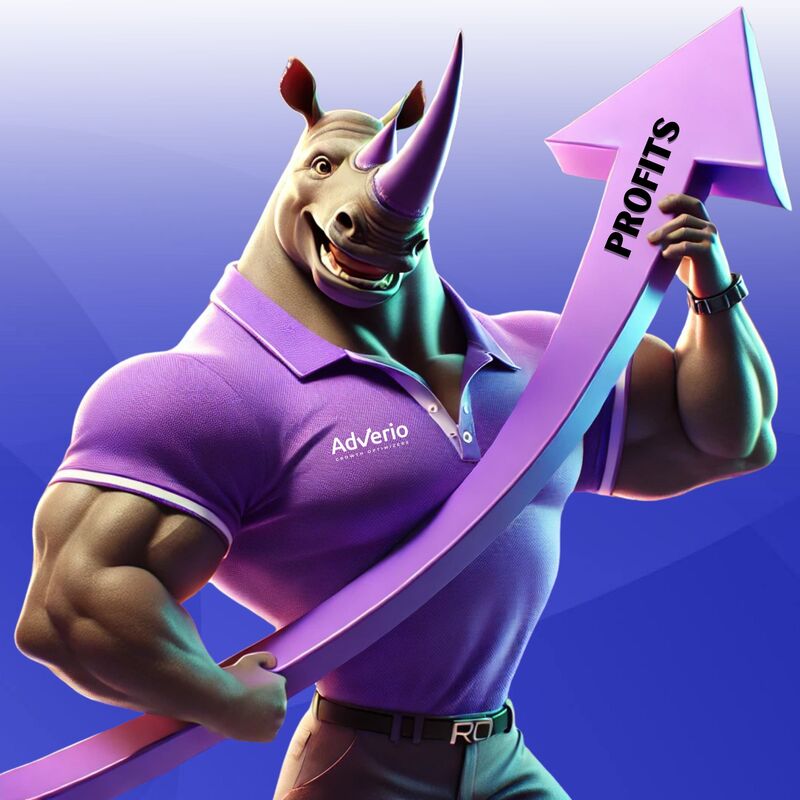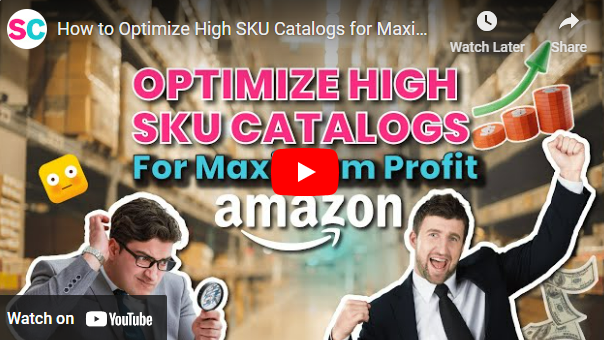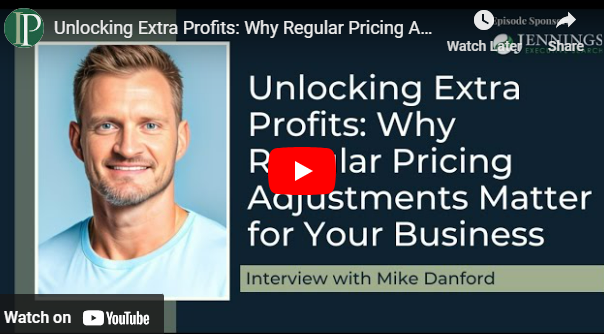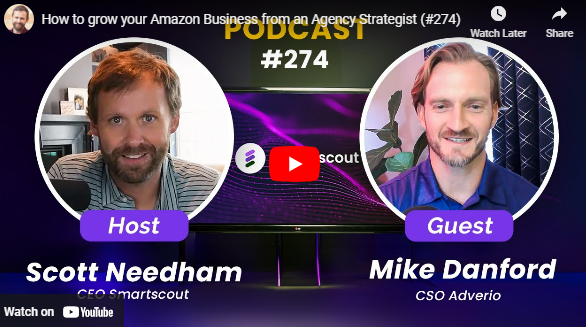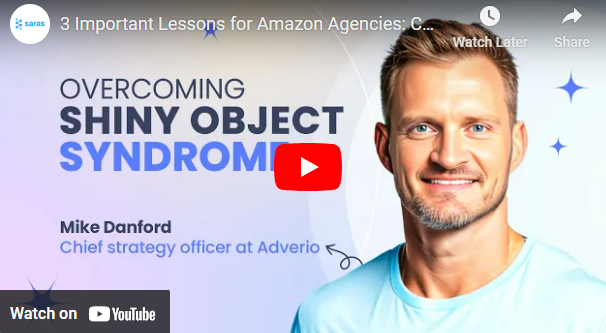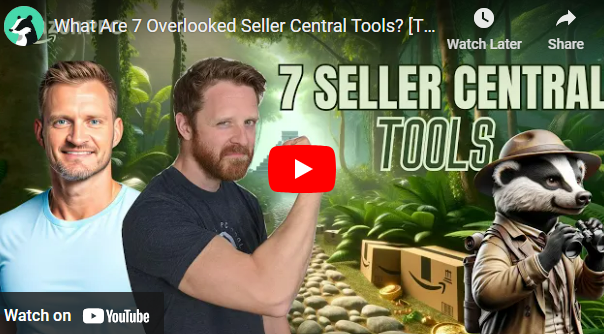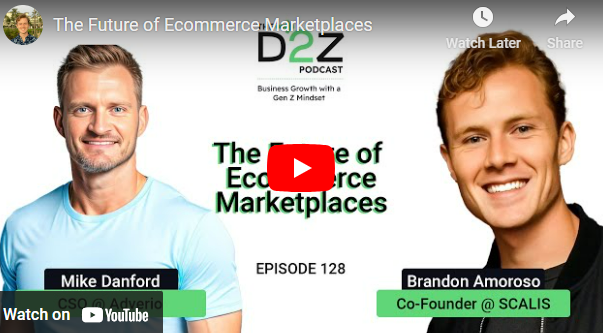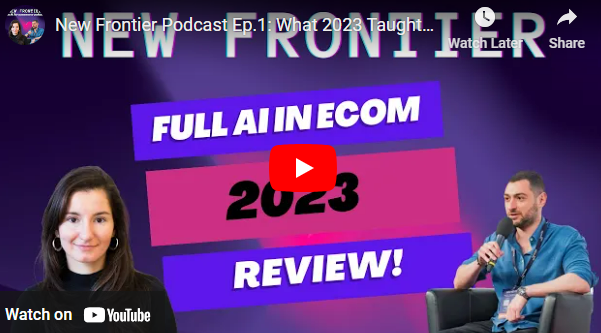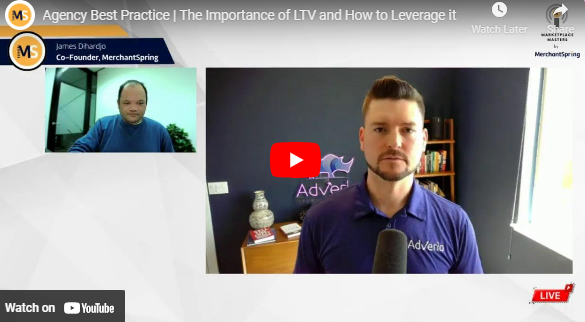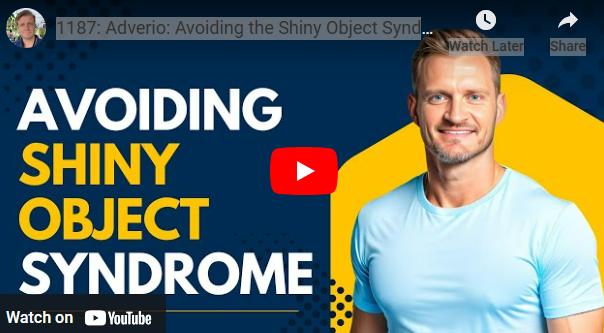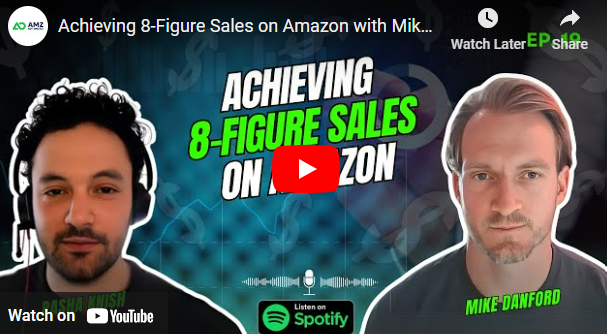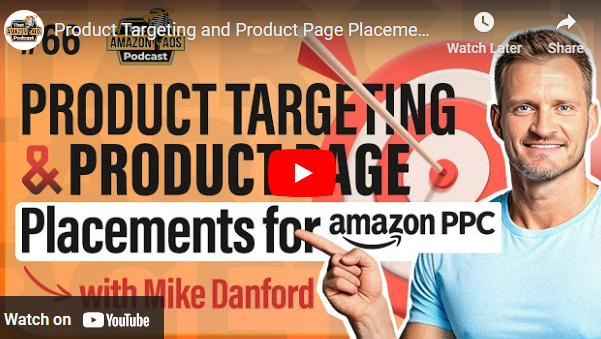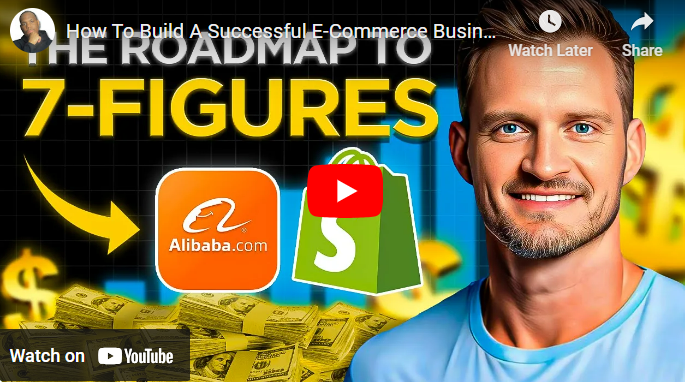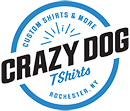The PPC Den Podcast
The world's first and longest running show all about Amazon PPC
Mike Danford from Adverio returns to the PPC Den podcast to dig into a commonly overlooked (and often misunderstood) Amazon PPC strategy: branded campaigns. He breaks down how to use Search Query Performance data (SQPD) to reveal hidden cannibalization, organize spend into strategic buckets, and unlock smarter, more profitable targeting including how to land competitor placements for less. If branded spend is eating up your budget, this episode is a must.
🦡 Highlights
00:00 – Intro
02:16 – Amazon PPC: branded spend cycles
07:22 – Bucket analysis, BI dashboards, and incrementality scores
11:00 – Targeting strategies: competitor pages, broad/auto campaigns, and negatives
17:55 – Controlling branded spend and tapering strategies
24:15 – Measuring results with cannibalization and Search Query Performance
30:12 – Final tips and actionable advice for brands
Transcript:
(00:00) What’s going on, Badger Nation? Welcome to the PPC podcast. The world’s first and longest running show all about how to make your Amazon advertising life a little bit easier and a little bit more profitable. Branded spend on Amazon is an interesting topic that has been discussed many many times on this here show.
(00:20) What hasn’t been discussed is really what to do about it and how to think about it uh in a way that you can actually do something with. We’re going to get on to this in this episode where we’re going to be talking about buckets of data analysis. We’re going to be talking about negative keywords sculpting broad and autotype campaigns to pick up competitor impressions for really cheap. It’s going to be great. Let’s jump in.\
(00:43) Mike, thanks so much for coming back on the show. Great to have you. Yeah, thanks for having me. Michael, tell me about your you so you’re in you moved office locations. Mhm. Are are you still working from home? What’s your what’s your home office strategy like? Yes, that’s from from home.
(01:01) It’s actually in the same room, but I’m I’m actually able to use multiple parts of it as opposed to be shoving. This should just be where my desk is. I was just in a corner and now I have three or four different uh zones where I can just sit, stand, be in the chair, different um cameras, mics, everything. So, um it feels like my office is 10 times the size it used to be. Fresh coat of paint. It’s the color I wanted.
(01:21) It’s it’s been great. um exceptional. I recently did something that might inspire some people out there. Uh you know, fourbedroom house, the master bedroom or the primary bedroom is gigantic. And we had all these little tiny rooms that I was using as an office, swapped it. My office is now the master bedroom. So, I’ve got oodles of space now. And it’s been awesome.
(01:46) That’s my That was my change over the last year or so. And it’s been cool. That’s nice and maybe there. We live in 127y old home. So they these rooms are not large. They’re all the same size. They were to shove a bathroom in my daughter’s closet. So she now has an own suite um bathroom. So that was right on. Right on.
(02:11) Anyway, as we shift from home office optimization into the world of Amazon PPC, uh I love that you brought this topic up in our pre-show, which is the cyclical nature. the thing that always comes up. The thing that I feel like people are either paying hyper attention to it or completely forgot about it and really where you want to be is the sort of balanced middle where you have it under control and tracked which is of course branded spend in Amazon PPC.
(02:38) So why was this up for you? Like did you recently have an experience where a client or something you noticed where branded spend was a little out of whack? Like talk us through how this came up for you. Yeah, absolutely. I mean, there’s some percentage of every brand that comes to us that will will work to try to, you know, reallocate that brand spend, but we’ve had clusters in the last 3 to six months where it’s like somebody’s all absorbing the same ideology and they’re just pushing 30 40 even about 7% of their spend on brand uh keyword protection. And you know, now
(03:07) with the search query performance where you can really more objectively understand your your search coverage and where you are in the funnel, it’s so much easier to objectively show and test inside of Amazon that hey, when you pull back spin on branded, you either do or don’t lose your purchase share.
(03:24) Um, so putting those two together has been remarkable. You know, it’s it’s it’s always interesting. I reflect it is definitely a hot take, a controversial topic. uh and brands come over. And then on the flip side, we’ll have brands to your point where they’re aware that they’re spending too much on branding and they’re and they’re scared to kind of pull back on that because they didn’t know they could measure in search grade performance or they don’t know how to measure if they pull back if they lose the the market or the purchase share. And then the others are, you know,
(03:48) they’re so used to that awesome looking rorowaz that when you go to where you’re trying to, you know, from other competitors or more generic search terms, etc., and they’re like, what? this rorowaz is a third or or a tenth of what we’re used to and it’s a bit of a shock for them if they’re not used to it.
(04:06) So that’s what we’ve kind of seen is is we got the branch a lot of times as well. You know it’s so fascinating I feel like branded spend uh both on branded search terms and branded as uh defense. It’s a really interesting intersection. I’m almost picturing in my head it’s like a lighthouse and against this lighthouse are a bunch of different angles, different kinds of waves crashing from lots of different directions cuz you have brands that are relatively I’ll say brand unknown. You have who would kill for branded traffic, you know, cuz that’s a sign of a really healthy brand.
(04:38) Like, hey, if you have 70% branded spend, sure, the the bummer on that is maybe I could have gotten those sales without that spend. At the same time, you have people clamoring for you and who you are, a new brand or a relatively unknown brand would kill for that kind of like apex of my market knows me and that’s awesome.
(05:00) So, you have like that perspective like the life cycle of the brand. Then you also have a lot of brands sometimes that they wake up and they’re like, “Oh, brand did spend.” Maybe they’re listening to this and all of a sudden they begin to ask this question. What’s really interesting I notice a lot is if a brand’s been operating and really analyzing things from a high level, meaning they know that their current a cost is 35%. And then you begin to do this branded study.
(05:24) All of a sudden now it turns everything that that brand knew about their ad spend. It shatters their world because it’s possibly been years of 30 35% a cost and then all of a sudden you tell them well your branded spend converts at 2% 3% a cost and everything else conver is at like a 60% a cost.
(05:51) So if you were to turn off all your branded spend today, your account level a cost would skyrocket and you your amount of revenue would be much lower than you thought you were generating. So there’s a lots of different angles that occur on this and it’s really a question of like well how does one manage this and what does one do and let’s take some of those scenarios.
(06:09) I would say the extreme scenario, somebody comes to you, they’ve got 70% brand spin. Incredible a cost because the majority of it is branded. How do you untangle that? Like what what is what is your process that you would do to untangle that? Absolutely. At first, we’re going to dive one layer. We’re going to try to understand uh what is the share of that 70% that is branded keywords or search or search result pages.
(06:36) Um, and the other part is to your point like your pad or PDP, your your detail page, product defense, and the little advertising carousels. We want to understand that breakdown. And then from there, we’re going to, you know, now you’ve got to get into the nitty-gritty of the actual target versus the search terms because you can target an as and it show up for a keyword or you can target a keyword and it shows up for an as. So, you have to be really intentional there.
(07:00) And a lot of that is now we’re getting into placements. How we have to force a keyword to show up on just a search and not the asens and vice versa. We got to have a you know product placement that’s high enough so it doesn’t show up in search. And so you’re just kind of declutter all that.
(07:18) Uh because we’ll we have a program we offer it to a brand like this is how we would do it. you know, here’s here’s your DIY option and they’ll go and do it and the first thing they’ll say is, “Hey, uh, we did all this, but we’re still spending and our search terms are still showing up for banner that and like negate and block and make sure your placements are set up.” That’s the next thing um, from there.
(07:35) But, uh, it’s it’s it’s all over the place. That’s how we kind of approach it is to kind of see where it’s at and and go from there. And while I’m there, the I do want to dig into the the as defense versus keywords as we go through this. Yeah.
(07:53) So I think that first point if I can just put a pin on that you know uh or sort of bookend that this kind of analysis is always helpful. I call it like bucket analysis meaning like um what bucket of spend do I have and how does it behave. So branded search terms is a type of bucket of analysis. Branded as search terms is another bucket of analysis. Placement information you can cross these dimensions. So branded search terms and top of search placement so on and so forth.
(08:18) So you begin to tease out each bucket of information that allows you to really understand and it’s difficult because it takes some time for anyone to do this kind of activity. And you know going back to that company that’s been humming along at a 35% and maybe operating only at a a top level almost like a they were just analyzing the finances of ad spend total ad spend versus total ad revenue versus you know total a cost or ad cost total sales. going deeper and sort of splitting these things out into smaller buckets is such a great point to do
(08:51) because it can reveal exactly what’s going on. And then you mentioned something towards the end of uh what you were just saying which was different considerations for you know as brand branded defense versus search term based defense. Uh how do you think about those two separate buckets? Yeah, absolutely.
(09:14) So we our DI or our reporting dashboard is fully built onto this. So it’s already pre-wired to say this is what you’re spending for branded as branded keywords, competitor keywords, generic keywords, uh competitor as all this is in built and we can see it when you connect the past 90 days because the search term level that we can um obviously if we move for longer we can see year over year and all that as well.
(09:36) Uh and then we tie that into an incrementality score so we understand we place incrementality like a brand keyword is the lowest incrementality. someone’s already searching for it, you’re likely going to have an organic placement, strong organic placement, but may not need to need to convert or spend on that. And then your your highest incrementality is you steal from someone else’s competitor or someone else’s branded search and everything else is kind of in between from that. So we we track that over time. We have an incrementality score.
(09:59) We put weight on that and then on we work with very large cataloges, lots of parents asens and lots of you know child variations within that parent. Uh, so we can have, you know, a thousand acins that have a thousand parents. So we end up having seven or eight thousand different variations within those.
(10:17) And so we can we can pepper and just fully cover all of the carousels on your own product detail pages, which is fun for us. And we approach that obviously report on it, see what the rorowaz, see how the performance, click through, etc. But it’s a defense and it’s also an upsell and a crossell potential as well for us.
(10:34) We have a lot of um a lot of case studies and results of how we’re going to show hey this product we’ve never seen before why is it now showing up in the carousel and it’s your own brand product so you get a lot it’s it’s a much better ro uh then go on a different you know detail page etc. So, it’s it’s a one.
(10:52) Um, but we have a lot of ways to know where based on your CPC here, based on your historic data here, we have an idea what your conversion rate is going to be and this is a percentage budget that go there and then we can either push really aggressively or or pull back and it’s t it’s a lot of fun. We can see it month over month and see how it impacts your intality for sure. Fantastic.
(11:11) So, yeah, that sort of to take that bucket analysis one step further as one is anal analyzing their individual buckets of performance. Not every order you get, not every dollar of spend is equal to another dollar of spend. And yeah, I love that. Um, the high I agree with you. The highest, you called it incrementality score.
(11:30) Yeah, I’ve always you just called it like the highest value order that you could get is like where you’re going after a competitor’s brand or a competitor’s product page because you’re b you basically plucked a sale potentially from them onto you. So that’s sort of worth more than just the revenue you generate in some way.
(11:49) You know, that sort of analysis can be very tricky for any brand to begin to dial in. What’s the conversation like when you have a conversation with the brand and you’re trying to explain these different levels of like, hey, this is a branded keyword like this has the, you know, lowest level, you know, lowest value for us because potentially they would have converted anyway.
(12:13) going up to competitor competitor term has a different level of value because they might not have converted at all. They might have purchased from a competitor. How does goal setting work uh at that level for you guys? Like do you set a account level goal? A a lot of people will set an account level total a cost goal uh an account level a cost goal, individual product category goal and then you begin to add other dimensions to it like branded or non-branded product page.
(12:37) you know, it can get very complex to sort of juggle all of that. What how did those conversations go with you and your clients? One, the best uh scenario is they’ve done a little bit of all of this. They’ve they’ve they’ve done branded keyword, branded uh PDP or product uh defense. They’ve got some competitor conquesting of product detail pages.
(12:54) Maybe they got some brand, you know, competitor keywords. So, we have a little bit of data where we can say, “Hey, here’s your relative row as conversion rate, etc.” So, these are kind of a starting point and let’s see if we can scale from that. And it’s really about getting a barometer of, you know, to your point, preparing them. Hey, competitor keyword is going to be expensive.
(13:12) Let’s let’s do a little bit of this. Let’s wait. Let’s that’s like the last thing we want to get into. Let’s maximize all the other placements and incremental targetings first and then go there and kind of work in between. How much can you take? Is it a certain product that is is better? Is it a certain brand? Brands want to come to us. I’ve got vanity. I have vanity.
(13:28) They’re going to like I want to conquest from this brand. Okay, we’ll do it and we’ll show you and let’s see if it happens. But like, yes, that’s great, but there’s on Amazon there’s millions of sellers. There’s millions of brands. Why not just pepper a lot of those little brands you can just absolutely dominate and crush based on review rating and pricing, all the other things. And so, I don’t forget I want to, we can talk about this later, I guess.
(13:52) Um, last time I was on, we were talking about um like targeting through autos and broads and more generic targeting as opposed to exact or an ace and pat. Well, we have consistently done this and we can get on a competitor’s landing p or competitor’s detail page uh for like a third of the cost through an automatic or category target than if we actually just do the exact pat. And so we can instantly reduce and keep that scale.
(14:17) And so we have brands right now and to your point about this conversation with the brand is let’s throw some spaghetti on the wall. Let’s see what happens. Let’s find where the highest row, best conversion, best volume is. And we just went to a tent pole for one of our brands uh for both Mother’s Day, Father’s Day, St.
(14:33) Patrick’s Day, and the search was really expens expensive this year. Uh less traffic, but we picked up and moved a lot of that spin. About 30% of that search spend we put on competitor pages and it filled the entire gap that we lost on the search. All the search traffic was was 30 or 40% down. We we made up with that on on top pages of competitors. That was an amazing win for us. We did not think we could make that much up. Um that was that was awesome.
(14:57) Yeah. To tease out what you just mentioned there which was you know utilizing a lot of I guess broader or looser targeting and then using that to show up as opposed to the exact as target. My rationale for this has always been and the way that I’ve sort of thought about this is I this puts this goes into the bucket of like that’s probably just the way the Amazon algorithm was designed or the Amazon PPC algorithm was designed where exact matches whether it be exact as targeting or exact match keywords sort of enter a different style of auction than a broad
(15:34) match keyword or an auto does. You know, case in point, you know, a low one of these low bid autos, right? generally do are able to generate clicks cheaper for the same search term than if you bid on that search term. Exactly. So, I think Amazon has some sort of mechanism to play with different auction levels based off different targeting.
(15:56) Uh, and there’s lots to be said about how to work within that. Um, but just because it was such a cool little thing that you just shared, tell me more about targeting competitor product pages with a sort of broad or loose style targeting. Is there anything more to say about that? Yeah. So, you know, placements.
(16:13) I think the last time I was on here, we we’re really heavy. So, we have replicated campaigns. You could have an as target, a keyword target, a category target, you know, we have dedicated campaigns that are PVP specific, so high placement, uh, product placements uh, and very lows. And then we have the inverse of that where we have, you know, a higher top of search or medium rest of search and then no multiplier for product placement.
(16:33) So, again, we know this campaign is going to show up here for this search term or this as etc. So that’s one way that we can be very granular, very specific where we have you know un like data hygiene on the back end once you cling on that together Amazon makes it messy and it’s like I can’t separate this.
(16:50) Then from there what we found is a category target will hit a product detail page for about a third the cost than if you actually just did an exact pat or an as target. And then somewhere in between is when you do an as expanded target.
(17:08) Um, but you can’t we want to make sure we only go for that that as product detail page versus the search um, and go back and forth on that. And then with the we hygiene because you still have bleed over and crossover even as as restrictive and and and and siloed as these campaigns can be, our reporting builds in and say, okay, this was a competitor as target, but it converted for a competitor keyword or this was a a branded target and it converted for a competitor target.
(17:32) So we we do clean that in the back end so we can still see that. um because you’re going to have belief ever regardless. You know, I’ve done a lot of research in this arena of where the type of targeting is really assisted through the use of negatives. So, I I’ve done a lot of that over the years, which is target something really loose like a category or something like that and then use a lot of negative keyword sculpting to sort of sculpt it in the direction of a competitor. Um that’s something that I found works uh quite well.
(18:02) Uh have you guys found the same thing? Like what’s your how often are you using negatives to sort of try to accomplish that component? Uh our catalogs campaign sets in the hundreds and thousands because of the number of products that we had and replication and duplication.
(18:19) We have accounts that have hundreds, thousands and and millions of negatives across the entire campaign set. For this reason, I’m going to tease it up for you. A relevant search term. What would be your comfort level or how do you have a comfort level of how many clicks or how much spin you would before you what you would perceive as a relevant search term? Well, relevance I would say you only need one click. It’s either relevant or not.
(18:43) But what I would say is like uh when I would underperforming to the point where I would want to negate it. Uh I would say probably two to three times the average cost per conversion of the account. Yeah. So, uh, we have some campaigns that are set up with that logic, you know, very similar. Give us some room in the greens.
(19:05) But when you go into the autos, the categories, no, you’re it’s a highly relevant campaign or highly relevant search term, we will negate it two clicks. Even if it takes 30 plus clicks on average to convert for 15 to 20 clicks and wouldn’t go into details. There’s a campaign, you know, negation reset and a sweep where we just pull everything out, do it for a few days, make sure something sticks.
(19:25) But when you do really aggressive category or automatic or even broad targeting, you’re going to get a lot of low relevant search terms, you know, really cheap clicks. You have to be really vigilant because you’re going to catch them in other campaigns as well. So, not be overly concerned with that. But that was something for our philosophy that really took us a lot of being like, “Hey, two clicks and we’re camping for this. We can’t do one click because I was like, is this not enough?” I thought it was interesting you mentioned that. No, no, that’s awesome. and and that I
(19:51) would say and you have this sort of like uh you mentioned too that they’d be duplicated elsewhere so it’s not as if you’re losing complete visibility there but when you’re building these uh you’re balancing the broadness of an auto with the specificity of what you’re trying to accomplish with it that makes a lot of sense and you mentioned something that I absolutely love uh which is the negative keyword reset um where you just go in periodically and you will just reset negatives of you know it happens a lot with seasonality happens a lot when you want to uh you know because conversion
(20:23) rates change over time ideally they get better so for something that you didn’t convert in the past you can always go back and clear it out um so I love that you mentioned that we’ve already got so many awesome things here studying your branded spend using search query performance to sort of measure that watching yourself reduce your branded spend and measuring that against your search query performance uh to be sure that’s aligned dividing it up studying the productbased branded defense versus the search term based. Uh building dashboards to better
(20:54) study this understanding these different buckets of spend have different levels of sort of value or incremental incrementality which is just a beautiful word incrementality that you give versus your own branded searches versus a competitor search.
(21:13) loved what you talked about about building these broad or auto style targeting and then balancing it with lots of negatives, doing negative keyword resets. That’s all part of my philosophy too. Uh and of course uh the other thing that you mentioned too was um looser targeting with the negatives. Yeah. So so many amazing topics here.
(21:40) Anything else to say about branded traffic, branded visibility? And because a lot of this stuff is we’ve sort of wrangled it in quite a bit, but I guess the the question I have is like number one, how and it’s about negatives. How feverly are you trimming branded spend? And what I mean by that is I’ve worked with some people before that have come to me and that have said, “Hey, I don’t want to appear for any branded search ever.
(22:05) So every single one of my campaigns needs a negative phrase, my brand.” What are your thoughts on that? That is a challenging uh negation for us in that you can overgate and block a rele. So if you as or you block a keyword that Amazon thinks is relevant or these other search terms are relevant and you block that you’ll have like a spidering effect to that.
(22:31) Um we don’t really know I don’t have a good terminology for it but if you over negate and basically when you negate you’re trying to train it it’s relevant. So you’re like hey this is not relevant. Amazon’s going to make assumptions. Now, there’s AI and there’s all kinds of stuff involved, but it’s like, hey, they’ve negated this search term and this search term and this search term and there’s this massive overlap over here. So, they’re going to start like phrase negating for you.
(22:56) And then if you negative phrase your own brand, uh, which I’m not saying no, we do that obviously, but be careful with it. Don’t overdo it. Don’t be don’t do it in a campaign where you don’t really need to, where you’re not getting brand traffic. I would say wait until you see brand traffic on a certain campaign and then start doing it.
(23:13) Try it negative exact first. Uh because on negative phrase you just that’s a massive negation outside of just the actual phrase match. Um it’s going to start looking at relevancy and what else is relevant to your brand and it’s going to start you on some of that stuff as well. We’ve seen that over and over again. And let me ask you a perhaps more specific question.
(23:32) And let’s say a client does come to you and they do have 70% of all their search terms, all of their uh product page sales, 70% of all their traffic was branded. How do you what do you consider that? Like would you say hey let’s get this under 50%. Like what is the approach that you would take? It’s going to be a taper. It’s going to be a shock for the brand especially when it’s that high.
(23:56) Um, and we have so we have to wait, you know, one to three weeks and sometimes a month before the search query performance data like catches up and shows and there’s some latency in that as well. So, it’s a really a 30-day reduction. And really what we’re trying to do is we’re trying to cut it in half every single month. So, if you’re at 70, you know, your goal would be around 3540 for the first month and see what happens.
(24:13) Measure it against the search rate performance. Okay, no loss in your funnel share on your brow search term. Okay, now let’s try to cut that 3540 back down to, you know, 15 20 25. what happens there and you just keep going past until you get down. So we have brands that yes they come to us 50 60% of their spend within three to six months we’re down to 5% of their spend is on brand and the branded sales are either the same or you know not they convert cheaper because you’re not getting in in our case we have a lot of campaigns a lot of products that you end up inflating your own bids inside your campaign manager before it goes out to
(24:47) the auction as well. So we want to have like really granular campaign like this is a brand new campaign and nobody else is bidding on that so we don’t inflate our bids um as well but it’s really just kind of reducing it and going back to that search query performance with all the query IQ it’s our intelligence that we built inside in house and it just shows the the following impact over time are you still impression share you still getting the uh clickthrough add to carts etc what’s going on and so far we have
(25:12) not seen issues uh for and I guess the the and uh to follow up on that question what is the like you know you mentioned like bringing it down over time, checking it against search query performers to be sure that your conversion share for these branded terms is the same. How are you actually doing that? Like how are you how are you engineering? What are you what are the actions that you’re pressing on the keyboard uh and mouse in order to bring it down? And I think uh I don’t know if you asked or like I was inferring a good percentage a single digit of your of
(25:41) your ad spend less than 10% of your ad spend should be gone to branded keywords as and product detail page defense is a totally different strategy depending on the size of your catalog etc. Uh first it’s looking at the campaigns that you have.
(25:58) How much co-mingling do you have? And we’re first we’re going to start just blocking keywords specifically in the campaign that we don’t branded. It’s it’s coingle. Let’s clean up that. Uh we we try not to relaunch campaigns especially if they have significant historical. We want to keep that as much as possible. So we’re going to clean that up. All right. And block the keyword or block the asens or whatever it may be in in the campaign.
(26:18) that spin is likely going to shift somewhere else if you haven’t fully done the negation and application uh negative phrase or exact as or whatever on the other campaign. So you’re you’re constantly having to fight that where does it pop up. Um again a lot of our products are going to be competing for very similar search terms whether branded or not. So it will it’ll go from one campaign it’ll go to another one and it’ll go to another one.
(26:37) Uh so when we start seeing that instead of playing whack-a-ole we’ll do a large full campaign negation or full campaign pausing. All this is uh very easy for us to revert either at a campaign level or a wide level uh within the actions that we can create.
(26:56) It’s like hey and we do it we try to do as much at once so you can see what the impact is quickly. If you start if you piece mill it you do slow it’s really hard to see the the performance um and to see the impact from it. So we do it really abruptly. What does the next couple days look like and then go from there. Awesome. So we ran the gullet of branded spend.
(27:14) I think we touched on a lot of topics that uh haven’t been brought up in years past. Uh so I appreciate you bringing some more of this modern and fresh stuff uh and bringing this stuff to light. So thank you so much for that. That’s all my thoughts. Is there anything else that you wanted to share about branded spend and how to think about it, how to mitigate it, how to control it, which is really the ultimate goal I think we’re getting at.
(27:34) You want to be able to control your branded spend. I think it’s one again, be intentional, be aggressive, see what happens. Don’t be afraid. If you do what you’ve always done, you’ll get what you’ve always got kind of thing. So, let’s see what happens. Let’s see if it shakes. Have a plan in place. Figure out how to use your query, your search query performance. Figure out how to measure what you’re doing.
(27:50) And the second part of that is we’ve built a cannibalization score in house as well. It kind of like does the exact opposite of the incrementality that we’re doing. So, hey, what happens when we pull our branded spin down and dust branded ad sales? Obviously, let’s see how that impacts our total sales. Let’s see how that impacts our organic sales and ad cells.
(28:09) that lets us know are is our canalation cannibalization decreasing or increasing as we push and pull on these branded search terms as well. So, it’s another way, another layer of testing as well and confirming and showing a brand because I tell you the worst scenario and this is a this is like a nightmare for us. Brand comes in, right? 50% brand spend.
(28:27) We cut it down to 25% uh in the first month. Sales drop. They’re going to automatically assume the reason that sales dropped is because they cut the spend in half on their right. So, two options, turn it right back on, see if sales recover. It doesn’t happen. I can just tell you. Uh but we have sometimes we have to do that.
(28:46) And the other is the canalization score helps us to show that it’s like hey everything is down. It’s not tied to this. And then we can show you the search query performance. We can show the branded traffic is the same or is down. So that will also show like hey it’s not because your brand um branded ad sales are down. Your brand traffic is down which has nothing to do with the ads in that regard.
(29:04) So there’s lots of ways we want to make sure we check and balance it because we do this every day. Brands have never done this to your point for years. They’ve been thinking about this. So we try to cover all the bases and get on that success. data and study that data like what this actually means.
(29:46) Um, so I like that you have sort of different lenses in which you’re analyzing data to because you know doing digital marketing doing PPC is all about just understanding what’s going on and then asking yourself like what is the next best option based off this like why did it change and what do we do about it? Um, and if you can figure out those two questions I think you’re ahead of 90% of PBC. You have to be able to measure it.
(30:10) uh both than like where you’re actually deploying it and and its impact um as well. If you can’t measure the impact, then I would say spend more time trying to figure out how to measure the impact or ask someone else to figure out how to do the impact because that’s important. Otherwise, you’re doing it blind. You have no idea. Like I said, sales down, I cut branded spin. That’s the culprit.
(30:27) No, it’s not. But we want to be able to show that. Well said. Well, Mike, where can people find you if they have any more questions for you? Sure. Uh Mikeadario.io. So, m ike ke a dv i io.io. Um, I’m I’ll answer to every email. Awesome. Well, Mike, thank you so much for coming back on the PPC Den and sharing some of your experience with us. I very much appreciate it.
(30:54) I’m sure everyone out there in Badger Nation did as well. Thanks so much. I hope to have you back on the show in a couple months. Everyone else, I’ll see you next week here on the PBC podcast. and picked keywords. I’ve got my bitsment too and bad mistakes. I’ve made a few. I’ve had my share of rocky, but I’ve got we are the people my friends and we’ll keep on waiting till the end.
(31:47) [Music] You to the PPC dead. We talking about Amazon. No time for it cuz we fix the game of the world. [Applause]

